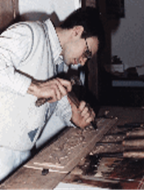 - Welcome - woodworking
- Welcome - woodworking
Woodworking
Wood made up of fibers is a material that is more or less difficult to shape, depending on its hardness. Wood is a sustainable and renewable resource that contributes to fighting against the greenhouse effect. Experts have studied its properties in biomechanics. It is used in different fields because its rigidity allows it to be shaped.
Cabinet maker
The French word ebéniste, for cabinet maker, referred to the word ebony, a precious wood. It differentiates it from the profession of carpenter. In the Middle Ages, all craftsmen worked for guilds. Until 1300, all craftsmen were under the command of the king’s carpenter. In 1314, the profession of a carpenter was divided into various categories, such as wheelwright, carpenter, and joiner. The French word huchier disappeared in favor of carpenter during the reign of King Francis I.
Being a cabinetmaker today means knowing complementary techniques and disciplines ranging from joinery, varnishing, sculpture, marquetry, and turning. This field requires knowledge of other materials to be able to apply them correctly as well. The art of restoration, meanwhile, requires deep knowledge of the history of styles. In Canada, art crafts are taught professionally, such as at Artebois School, which specializes in woodworking. The Quebec Crafts Council aims to promote fine crafts in Canada and abroad.

Woodcarving with Mr. Eric Thériaut, a passionate cabinetmaker from Quebec for the school, www.artebois.com
Cooper
The cooper must begin with the making of the oak slats. The second step is shaping, with the assembly of the barrel made by the progressive tightening of these pieces of wood surrounded by an iron circle. The whole obtained is heated to bend it and is regularly moistened to be able to work it.
The heating stage of the barrel has an influence on the aroma. The method differs according to each artisan, taking more or less a long time. The essence of the wood has an impact on the tannins, which is why sessile oak is used for barrel making.
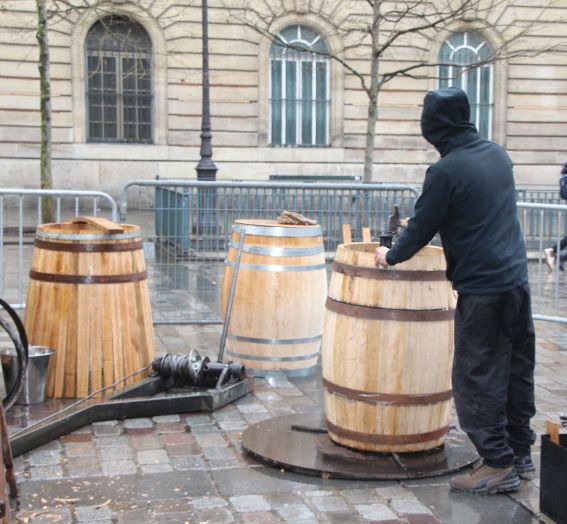
Instrument maker
The luthier is fond of the design of stringed instruments and has to maintain and restore them. He has a musical ear to test the sounds of these instruments.
The knowledge of wood is significant because he must select it, cut it, shape it, assemble the different parts, and then gently apply the varnishes. There are luthier schools in Europe in Belgium, England, Germany, Italy, and the United States, as well as a school in Quebec with a specialization in violin and guitar.
Etienne Vatelot (1925 - 2013) was an internationally renowned instrument maker. He was passionate about cabinet making and Art crafts. He had been president of the French Corporation of Art Crafts Encouragement. He had started learning his craft in his father's workshop, then with other instrument makers in Mirecourt, Paris, and New York. He created the National Lutherie School in Mirecourt in 1970, a renowned place for violin making. In 2020, the school celebrated its 50th anniversary. The French word luthier used for this profession comes from the lute instrument.
Mittenwald in Bavaria is also an internationally renowned place for violin making. Matthias Klotz was the founder of violin making, whose origin dates back to 1680.

Courtesy of Mrs Valérie Beausert-Leick,
Photo credit of the National Violin Making School of Mirecourt, located in eastern France.
Mastercraftsman Antonio Stradivari (1644-1737), was one of the greatest luthiers. The value of his instruments was sufficient to justify his expertise.
"Stradivarius did not need any patent on his violins, for no other violin maker would pay such a price of excellence as he paid, would take such pains to put his stamp of superiority upon his instrument" wrote Orison Swett Marden.
Niccolo Amati (1596 - 1684), a native of Cremona, gave the violin the forms we know today. Exceptional pieces by these great craftsmen are on display at the Venice Music Museum.
Jean-Baptiste Vuillaume (1798 - 1875), a renowned instrument maker from Mirecourt, was born into a family of violin makers and was inspired by the masters of Cremona.
The Paris Philharmonic Music Museum has some unique pieces, such as the Davidoff, a violin made by Stradivarius in 1708 in Cremona during its heyday between 1700 and 1720.
Davidoff was of Franco-Russian origin, and he wished to bequeath this instrument to the conservatory museum. There are also other instruments by Stradivari, one violin by Guarneri del Gesù, a dozen other instruments, and some pieces by Jean Baptiste Vuillaume. This set is one of the most important public collections in the world. The "Messiah" created in 1716 by Antonio is kept, on the other hand, at the Ashmolean Museum in Oxford, UK.
Among the extraordinary violins, we can mention the one by Wallace Hartley, conductor of the Titanic. It is kept at the Titanic Museum in Belfast, which has just opened its doors this Saturday, March 4, 2023, after a little work. This violin was forgotten in an attic for a few years and is now exhibited in Ireland.
The bow maker is in charge of making the archet shaped in softwood. It has to support a wick made of horsehair. The form of the bow evolved several times, in particular with the expertise of François Xavier Tourte (1747 - 1835).
The creation of the bow in the Middle Ages generated the invention of several bowed string instruments such as jigs, lyres, rebecs, rotes, and medieval fiddles.
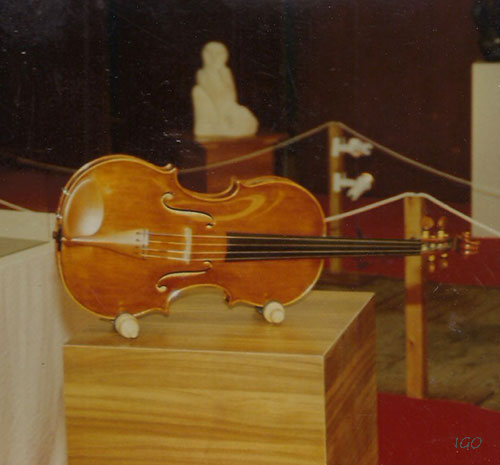
Violin exhibited at the Arts and Crafts Festival.
The Bandura
Bandura is a national Ukrainian string instrument. The sound of this instrument looks like that of the sitar. It was once used to spread good morals and respect through the singing of the kobzars, who went playing this instrument from village to village.
It is a plucked instrument, quite large and heavy, with 65 strings and a bridge. It is tuned in semitones.
The model below has beautiful ornamentation in the center and a delicate flower in the marquetry. It is performed by Larissa Kovalchuk all over the world.
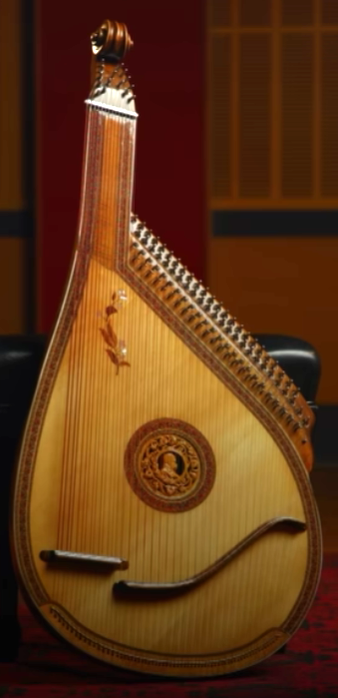
Photo credit - Larissa Kovalchuk
Cetera maker
The Cetera is an eight double-string instrument made on Corsica Island, located between the south of France and Sardinia. It almost fell into oblivion, but it was rediscovered in the 1970s by fans of traditional music from the island of Beauty.
The sound of the Cetera lies between the harpsichord and the guitar. It is related to the citterns family and comes from the Italian Renaissance. Technical developments have allowed the instrument to improve over time while maintaining its authenticity.
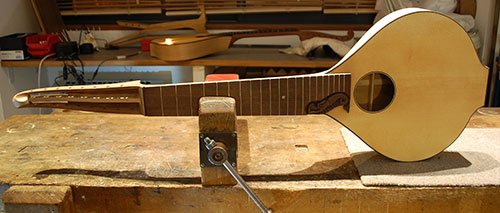
Cetera from Corsica was manufactured in the workshop of Mr. Christian Magdeleine in Bastia.
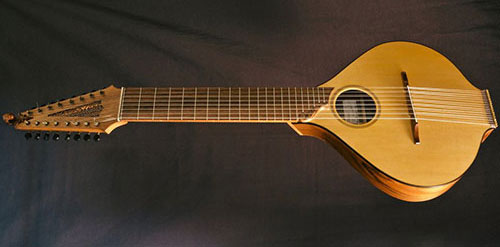
Photo credit - courtesy of M. Christian Magdeleine.
Concertina
The concertina is an octagonal accordion invented in England. Lachenal and Co., based in London, was one of the most important manufacturers of this instrument, which was popular in the United Kingdom.
Two pieces of mahogany wood, on which the keys are distributed, frame the bellows. The leather straps keep the hands in place. Being easily transportable, it was the traveling companion of an Australian soldier.
Another well-known model is the Chemnitzer concertina in the German version, with a square shape. Berlioz, in his book on instrumentation and orchestration, evokes the sonorities of this very particular instrument.
Video courtesy of M. Mike Bulboff from Liberty Bellows Accordion Shop in Philadelphia.
Harpsichord maker
The harpsichord is a stringed musical instrument with a keyboard. The first mentions or representations of it can be found at the end of the Middle Ages, even in the Renaissance. It may have one or two keyboards making sounds with multiple rows of strings to choose from.
The instrument dominated courtly music from the mid-17th century to the end of the 18th century. Political and sociological changes caused its disappearance. It was gradually replaced by the pianoforte and then the modern piano. The names of the composers who brought the harpsichord to its peak are: In France, the Couperins, in Italy, Monteverdi and his contemporaries, in England, Handel, Bird Purcell and in Germany, Johann Sebastian Bach and his family. In all logic, the profession of harpsichord maker died out during the French Revolution. But it was reborn in two phases in the 20th century, and with it came the rediscovery of the immense wealth of baroque music.
It was American and European researchers who brought this instrument and its music back to life. This research is still not completed. The materials used for the construction of the harpsichords are wood of different species, brass and iron strings, leather, fabrics, and bone. Some harpsichords were decorated with sumptuous paint and gilding, both on the soundboard and on the case and cover. It is often these harpsichords that survived thanks to their decorative value. Huet, Bérain, Watteau, and many others especially in the Netherlands, decorated harpsichords.
Twentieth-century researchers even had to find, or invent, the vocabulary of the harpsichord: «Soundboard, keyboard, jacks, steps, feints, easel» are old terms, brought up to date. Others, like «listel or address bar» are neologisms, more or less skillful.
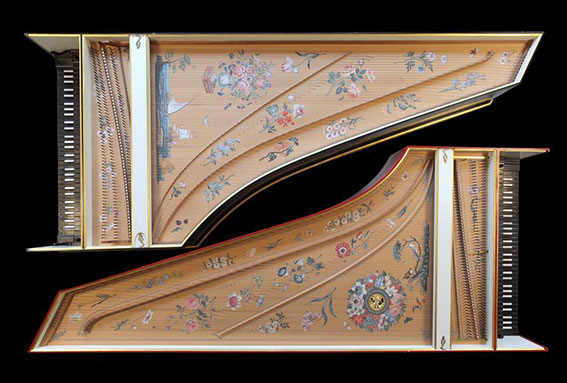
Photo credit - Courtesy of M. Reinhard von Nagel
and all my thanks for your comments.
The workshop is located in the Faubourg Saint-Antoine in Paris.
Marquetry
This art involves joining mainly wooden parts and sometimes some tortoiseshell, mother of pearl, metal inlay, or veneer.
The origin of this art goes back to Egypt and then to Italy. Subsequently, it spread into southern Germany, Flanders, and France in the sixteenth century.
This discipline serves to adorn fine furniture and is used for the creation of portraits and landscapes as well.
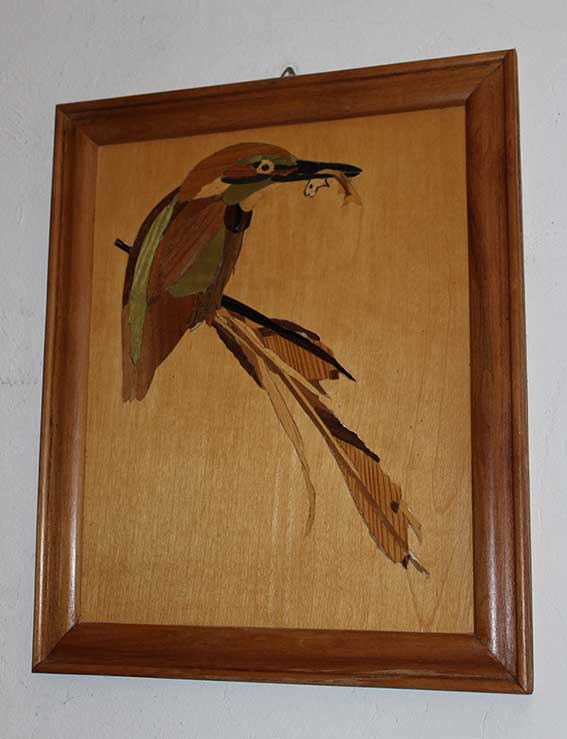
The European kingfisher with a fish in its beak.
Tray encrusted with mother-of-pearl
Burgau's mother-of-pearl comes from the inside of some shells and is prized for its iridescent reflections. The top is rosewood, which has a specific wood grain and a particular texture. It is used for pieces of marquetry and musical instruments.
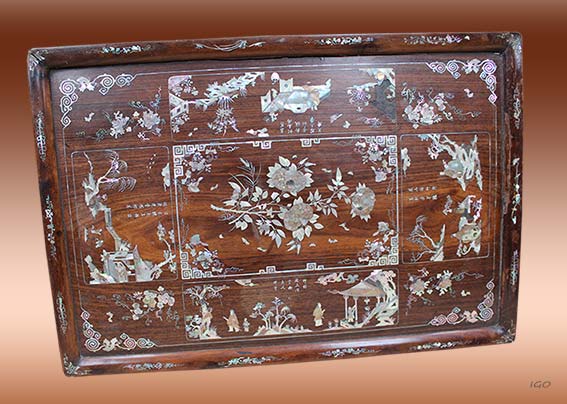
Tray encrusted with mother-of-pearl, representing 4 Asian scenes.
The engraved sentences are excerpts from poems by great poets from different Chinese dynasties.
闲居初夏午睡起
作者:杨万里
梅子留酸软齿牙, 芭蕉分绿与窗纱。
日长睡起无情思,闲看儿童捉 柳花。
It is a part of the poetry of a Chinese poet of the Song dynasty, the great poet is called YANG WANLI (from the year 1127 to the year 1206) he is one of the most famous poets of the 'time. The meaning is as follows: "Summer has come now after the spring, the days are longer, and after a nice nap, I do not want to do anything but enjoy watching the kids having fun in the flower garden."
古诗:清平调
李 白
名花倾国两相欢,长得君王带笑看
解释春风无限恨, 沈香亭北倚阑干。
It is a part of the poetry of a Chinese poet of the TANG dynasty, the poet is called LI BAI (from the year 1127 to the year 1206), and he is the most famous poet of China of all time.
A poem for the Emperor's concubine, her name is YANG Guifei, one of the 4 most beautiful Chinese women in history, which can be translated as: "By admiring the beauty of the peonies and the beautiful Yang Guifei, the king's heart is filled with exuberant joy".
My thanks to Guojing for his contribution to this topic.
Manufacture of makhilas
The makhilas are walking sticks realized in the Basque region. Hardwood such as Medlar Germanica is used for making the neck. It is embellished with metal reinforcements, a braided leather strap, and a knob. The latter can be shaped in different materials, such as metal, silver, and horns. In addition to the engraved decorations, it contains a motto and the initials of the future owner. Personalities like Charlie Chaplin, John Paul II, presidents, athletes, and musicians owned their custom makhilas.
This know-how has been passed down from generation to generation since the revolution in the Ainciart Bergara family, who have acquired skills in working with wood, metal, and leather.
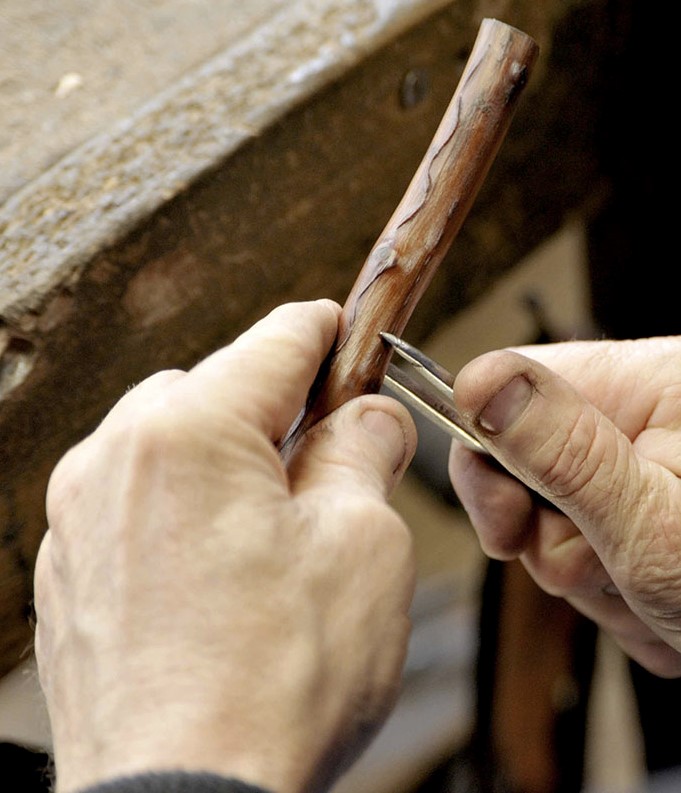
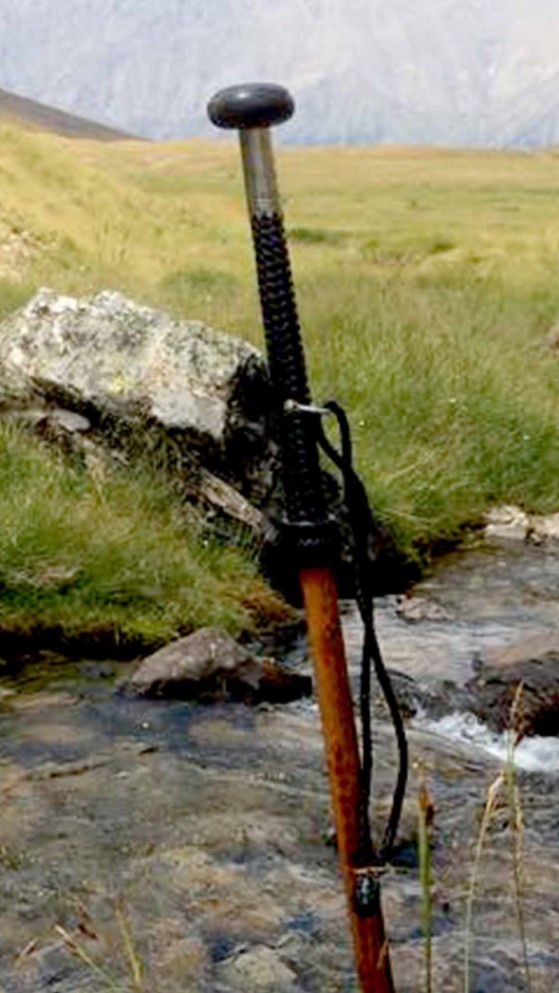
The artisanal manufacture of makhilas,
courtesy of Liza Bergara, the 7th generation of Ainciart Bergara makhilas!
Sculpture
In this area, we have to distinguish the relief carving between the sculpture in the round. A relief sculpture, means that the form has been carved in such a way that it stands out from the background. The expression In the round is used for the piece, which it is possible to go around it. Apprenticeship began with the trimming of simple geometric shapes and the work of more sophisticated forms. Gestures are repeated many times before reaching excellence. |
John-Luc GODARD |
Ship's carpenter
The construction of a pleasure boat or a fishing boat begins with the machining of the wooden parts. Some curved parts are more delicate to realize. The carpenter must work the wood to obtain the desired curvature. There are different ways, such as putting several thin and flexible wooden blades together or bending the wood with steam.
Then, the assembly phase can begin with the laying of the keel, the central beam, and the frames of the hull. Finally, the interior fittings for the most sophisticated models, where several trades are at work such as electrician, plumber, carpenter, and sometimes cabinetmaker for the top of the range.
The sealing treatment is essential before applying the paint and varnish. He then proceeded to implement the navigation tools. And lastly, a few maneuvers to launch the boat, traditionally by sliding it on the beams.
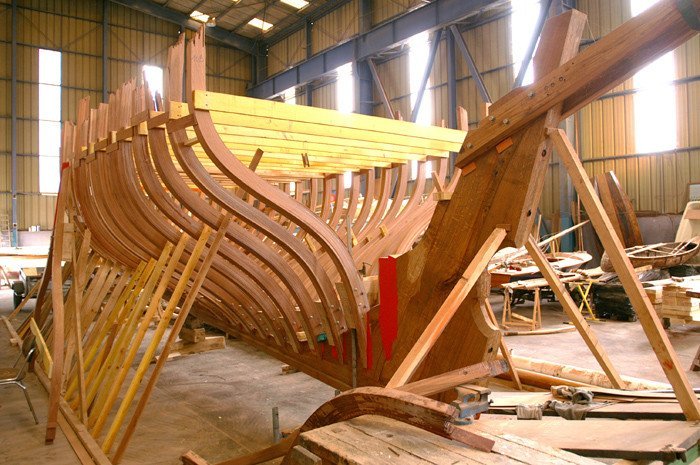
Replica of Jules VERNE's boat
Photo of the documentary fund of the association La Cale 2 l'ile located to Nantes city.
Wood turner
He shapes the part on the wood lathe firmly attached to both ends of the machine. The chisel must be skilfully applied to the rotating part, whose speed is adjusted depending on the piece to be created.
The first wooden lathes with bows were designed by the Egyptians. In the Middle Ages, the lathe activated by a pedal freed the hands, and the craftsman could work alone. These machines in the electric versions made it possible to vary the speed of rotation and to work more delicately on certain parts.
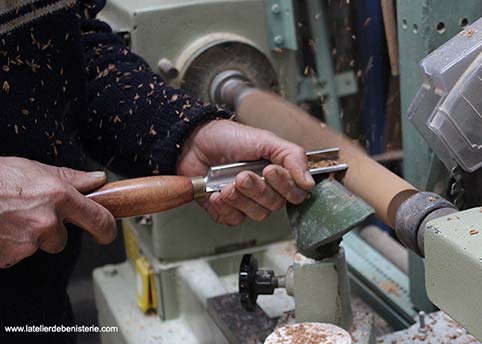
Turning a piece of wood.

